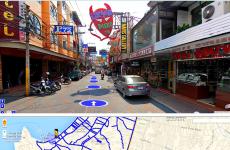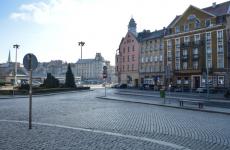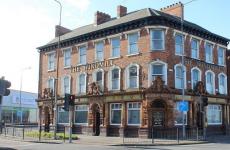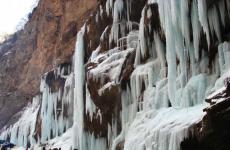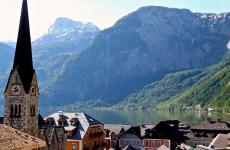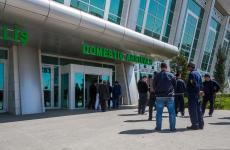Czech Republic. Geography, description and characteristics of the country
We are all familiar with the countries near the Czech Republic. After all, it borders on Poland and Germany, Slovakia and Austria. Such a favorable geographical location at the intersection of trade routes from Europe to Asia, a mild climate and an abundance of mineral springs gave the Czech country an excellent chance for prosperity. Every year millions of tourists from all over the planet flock here to improve their health at balneological resorts and admire the unique architecture of the country and its ancient castles.
The Czechs are a highly cultured and educated nation. After all, they went through the difficult period that came after the collapse of the socialist camp with dignity. What is the Czech Republic rightfully proud of today? The country's economy is first and foremost, which is in second place among the countries of Eastern Europe.
For travelers
The country of the Czech Republic in the tourism market is conventionally divided into three directions: balneological, ski and excursion holidays. For lovers of a wide cultural program, it is suggested to visit Pilsen, Brno, Cesky Krumlov, Ostrava and, of course, Prague.
Those who want to improve their health go to the west of the country. It is here that the main resorts are concentrated, such as Marianske Lazne, Karlovy Vary, and Kynzvart. For ski holidays, the Czech Republic offers its eastern territories. Here, on the border with Poland, there are resorts such as Harrachov, Rokytnice nad Jizerou and Vitkovice.
This amazing country still has more than two and a half thousand medieval castles, striking with their unique architecture. And it is not surprising that artists and romantics, lovers of antiquity and connoisseurs of beauty love to visit the Czech Republic. Having arrived in the country only once, it is impossible to cover the huge number of attractions available on its territory. That is why many tourists return here again and again.

What else attracts travelers to the Czech Republic? It is impossible to describe the country without talking about the original and delicious national cuisine. a haven for gourmets, making people forget about diets and their waist circumference for a while.
The Czech Republic is a real earthly paradise for beer lovers. The recipes and traditions of preparing this drink, represented by a huge number of different varieties, are carefully preserved here.
Geography
The country of the Czech Republic has 658 km of borders with Poland in the north, 646 km with Germany in the northwest and west, 214 km with Slovakia in the east, and 362 km with Austria in the south. Thus, the length of all borders of this state is 1880 km.
The territory of the Czech Republic has a very diverse landscape. Thus, the region of Bohemia in the west is located in the basin of rivers such as the Vltava and Laba. It is surrounded by low mountains.
The eastern part of the Czech Republic is the territory of Moravia. It is also distinguished by its hilly surface. This area is located in the Moravian river basin. The Czech Republic has no access to the seas. However, all its rivers rush towards them. They flow into the Black, Baltic or North Seas.
The highest mountains of the country are in its northern part. They are called Kokonoshi. The highest mountain is Snezka. It rises 1600 m above sea level.

You can find the Czech Republic on the world map at the coordinates of 49 degrees 45 seconds north latitude and 15 degrees 30 seconds east longitude. This is the very heart of Europe. In order to be convinced of this, it is enough to visit the area located between the cities of Pilsen and Cheb. It is here that a memorial sign is installed, on which there is the inscription “Center of Europe”.
The country's territory is 78,866 square kilometers. In its own way it ranks 115th in the world. Two percent of this territory is water surface.
Climate
The Czech Republic is a country with a surprising amount of softness here. It is very hot in this area only during one week of the year. The country enjoys comfortable weather in all seasons. In summer, the average temperature here is within twenty degrees, and in winter the thermometer practically never drops below minus 3. Such an ideal climate is created due to continental and maritime influences. The mountain environment reduces the negative impact of winds.
Administrative division
On the map of the country you can see thirteen regions, or edges. The main administrative center of the country is its capital - the city of Prague.

What regions (regions) are part of this European state? Their list includes the following:
- Central Bohemian.
- Plzensky.
- South Bohemian.
- Karlovy Vary.
- Ustetsky.
- Karlovegradecki.
- Liberetsky.
- South Moravian.
- Slomoutsky.
- Pardubitsky.
- Moravskosilevsky.
- Zlinsky.
- Vysočina.
Story
The territory of the Czech Republic was inhabited by people back in the Stone Age. The very first mentions of this country were found in chronicle sources dating back to the 9th century. During this period, the territory of the Czech Republic was under the control of the Přemyslid princes.
The second name of these lands is Bohemia. It came from an ancient Celtic tribe that inhabited territories located in modern Northern Bohemia. After them, these lands were developed by Germanic tribes - the Marcomanni, who were replaced by the Slavs in the 5th century. The latter were the ancestors of modern Czechs.
This Slavic state reached its peak at the beginning of the 11th century. During this period it was called Great Moravia and had an impressive territory, which included the current lands of Slovakia, Bohemia, as well as parts of Hungary and Austria.
Interestingly, there is no historical information about which city was the capital of this state and why its collapse occurred. Most likely, this was due to numerous internecine wars. It is known that Great Moravia was a Christian country, and its baptists were the apostles Methodius and Cyril (the same as in Rus').

In the 17th century. The Czech kingdom became part of Austria-Hungary, and after its collapse in 1928, the unification of Subcarpathian Ruthenia, Slovakia and the Czech Republic took place. These countries became known as Czechoslovakia. In 1939, the country was occupied by the troops of Nazi Germany. Liberation came only at the end of World War II, when Soviet soldiers entered Czechoslovakia. After this, the country entered the socialist community.
However, in the late 1980s, Czechoslovakia was gripped by mass demonstrations and protests. All of them resulted in the so-called Velvet Revolution. This was followed by a strike of enormous scale, which resulted in regime change. The country was led by former dissident, playwright Vaclav Havel.
On January 1, 1993, Czechoslovakia was peacefully divided into two states. Two republics were formed on its territory - Slovakia and the Czech Republic. After that, the history of the country began to take shape independently. Thus, in 1999 the state became a member of NATO, and in 2004 - a member of the EU. Since 2007, the Czech Republic has been participating in the Schengen Agreement, which means that a person with a visa from this country can travel throughout Europe without any obstacles.
Political structure
The country of the Czech Republic is a state with a representative democracy. In such a political regime, the main source of power is the people, but various representative bodies are delegated to govern the state. The Czech Republic is a parliamentary republic. Its executive powers are the president and the government. The latter, in turn, is responsible to the Chamber of Deputies.

The head of the Czech state is the president. From January 27, 2013 until today, this post has been held by Miloš Zeman. He replaced Vaclav Klaus.
Milos Zeman is one of the most prominent figures in European politics. This opinion about him was formed due to the tough personal position of the leader of the Czech Republic and controversial statements. It is worth saying that the current president of the Czech Republic, unlike most European politicians, supports Russia’s actions in many areas. The opinion often runs counter to the statements of Brussels. And his position is quite firm.
As for the Czech parliament, it is bicameral. It includes the Chamber of Deputies and the Senate. The Chamber of Deputies is supported by the work of its two hundred members, who are elected by the people once every four years. There is a principle of proportional representation. Renewal of one-third of the Senate occurs once every two years. Each of the 81 senators is given a six-year mandate.
The Constitutional Court is the guarantor of ensuring the basic rights of the Czech people. It consists of 15 judges with the power to repeal laws that contradict the country's constitution.
Population
The Czech Republic today is included in the list of densely populated countries. According to the latest statistics, its population is slightly more than 10 million people. A tenth of them live in the capital of the state - Prague. The rest of the population, as in most European countries, is mainly concentrated in other cities.
For several years in a row, the Czech Republic has seen a steady increase in natural population growth. This occurs due to a decrease in mortality and an increase in birth rates. In addition to natural growth, there is an influx of emigrants. It also increases the population of this European state.
Official language
Throughout the centuries-old history of the Czech Republic, various peoples and tribes have lived on its territory. However, today 95% of the population is Czech. They preserve their own national traditions. Knowledge about historical roots, of which the Czech Republic can rightfully be proud, is also highly respected. The language of the country is Czech. It is spoken by the people of this state, despite its multinational composition, represented by Poles and Slovaks, Gypsies, Germans and Jews. Of course, they are all a minority, but they are full citizens of the country.
Today, the population of the Czech Republic uses the three most common groups of dialects to communicate. Here people speak East Moravian, Middle Moravian and Czech. The country's official language was able to survive centuries of decline and Germanization. Its revival occurred in the 18th century as a literary one. But then Czech began to penetrate more and more into the lives of ordinary people, becoming an everyday language.
Today, the country's official language is heard on the streets of its cities. At the same time, young people speak English well, and the older generation easily switches to German.
Prague city
The largest metropolis and the most popular tourist center in Europe is the capital of the Czech Republic. More than 6 million travelers visit Prague every year. Everyone who understands architecture and appreciates the taste of beer strives to visit this friendly and elegant city.
Since ancient times, Prague has been considered one of the most beautiful cities in Europe. And its names confirm this. Thus, this amazing city is sometimes referred to as “golden Prague” or “city of a hundred spiers”, as well as “stone dream”.
The capital of the Czech Republic has cobbled narrow streets, the amazingly beautiful Charles Bridge, as well as a huge number of different attractions.
The exact date of the creation of Prague is unknown. However, already in the 15th century, chronicles contain references to fairs held at the confluence of the Vltava and Berounka rivers. The formation of Prague Castle took place in the 9th century. In the next century, Prague received the status of the capital of the Czech Kingdom. The city began its rapid development in the 12th century, becoming the capital of the Austro-Hungarian Empire.

During World War II, Prague was occupied by the Germans. However, fortunately, the military operations carried out on its territory did not lead to the destruction of unique historical structures.
In the post-war years, a metro appeared in the capital of the Czech Republic. The construction of new microdistricts proceeded at a rapid pace.
After the victory of the Velvet Revolution, Prague became one of the most popular European cities among tourists. Its historical center is recognized as a UNESCO heritage site.
Today, the population of the capital of the Czech Republic is more than 1.3 million people, who live in 15 districts, numbered depending on their distance from the center. On the map they can be seen arranged clockwise.
A country's economy
The basis of the national economy of the Czech Republic is mechanical engineering and electronics, the food industry and ferrous metallurgy, the service sector and construction. One of the most successful post-communist states today is the Czech Republic.
The characteristics of the country in economic terms indicate the success and stability of its national economy. After the Velvet Revolution, the Czech Republic inherited energy-inefficient and environmentally unfriendly production facilities from the Czechoslovak Socialist Republic. In those years, too large a share in the production sector was occupied by ferrous metallurgy, which relied on imported raw materials, as well as the military industry and mechanical engineering.
As for foreign trade, it was mainly focused on the needs of the USSR, which significantly restrained the growth of the country's economy.
Since independence, the government of the Czech Republic has made some significant changes. It abolished centralized price regulation, introduced freedom of private enterprise, abolished the monopoly of state foreign trade, and carried out privatization and reconstruction of property. Thanks to the influx of foreign investment, the Czech Republic carried out modernization and restructuring of industry in the shortest possible time, and also developed the necessary auxiliary and technical infrastructure.
Today, the Czech Republic is experiencing rapid growth in GDP. This is due to the growth of the industrial sector and the reduction in the share of ferrous metallurgy and production intended for military structures. The share of the automotive industry and the production of electrical products increases. This allowed the Czech Republic to achieve a positive foreign trade balance. Success became possible even despite the rapid rise in prices for gas and oil imported into the country.
It is worth saying that the size of foreign trade per capita in the country is very high and is ahead of countries such as Great Britain and Japan, Italy and France.
The Czech Republic is an independent republic located in Central Europe, formed in 1993 as a result of the collapse of socialist Czechoslovakia into two independent states: the Czech Republic and Slovakia. It has a border with Poland in the northern part, 658 km long, in the southern part with Austria, the length of the border is 362 km, in the western and northwestern part with Germany, 646 km, in the eastern part with Slovakia, 214 km. The capital of the Czech Republic is the largest tourist center in Europe and the country, the city of Prague. Large cities: Brno, Pilsen, Ostrava.
Physiographic location

The area of the Czech Republic is 78.9 thousand km 2, the state is located in the geographical center of Europe, this is clearly confirmed by the obelisk installed in Western Bohemia with the eloquent inscription “Center of Europe”. The country has an advantageous geographical location in terms of cooperation and trade relations with other European countries, however, the lack of access to the World Ocean (the territory of the Czech Republic is not washed by the seas) negatively affects the country's external relations.
The population of the Czech Republic as of 2015 is estimated at 10.5 million people, it is a densely populated country with an average density of 133 people per 1 km 2. About 90% of the population are ethnic Czechs, the rest are Moravians, Slovaks, Ukrainians, Poles, etc.
Nature
 Mountains
Mountains
The natural landscapes of the Czech Republic are diverse; most of the territory is represented by hills, plateaus and mountains of medium height. Depending on the geological structure, the Czech Republic is divided into two parts: the western and central part, called Bohemia, is located on the territory of the Czech Massif, consisting of alternating plateaus, hills and hilly plains (here, in the Sudeten Mountains, is the highest point of the Czech Republic - Mount Snezka, 1602 m), the eastern part (Moravia) is characterized by a predominance of hills and relatively high mountains, the Carpathians, there are few flat surfaces here (about 21%), located in the valleys of the Laba and Morava rivers.
The central part of the country is dominated by plains, on the borders of the state - mountain ranges, in the north-west - the Krušne Mountains, in the north - the Giant Mountains, in the east - the Orlicke Mountains, in the south-east the Carpathians, the south and south-west - the location of the Šumava Mountains, the west - Czech forest...
 Rivers and lakes
Rivers and lakes
The Czech Republic has a dense and extensive river network, the main river routes are: the Laba (Elbe) River, the Vltava, the Morava, tributaries of the Danube and Odra, the rivers belong to the basins of three seas - the Black, Northern and Baltic. For navigation, the riverbeds of the Laba and Vltava rivers are used, up to the location of Prague. In the Czech Republic there are a large number of ponds and reservoirs with dams that provide drinking water and electricity...
 Forests
Forests
In terms of forest cover, the Czech Republic occupies one of the leading places in Europe, forests occupy 30% of its territory. The spruce and pine trees that grow here in large quantities are of great industrial importance; alpine meadows stretch in the mountains above the boundaries of forest vegetation...
 Plants and animals
Plants and animals
One third of the entire territory of the country is covered with coniferous forests; in the mountainous areas, pine and spruce trees often grow, with lower oaks, maples and ash trees. The fauna is not rich and diverse; the Carpathian Mountains are inhabited by wolves, brown bears, wild boars, foxes, chamois, deer, beavers, pheasants, and hares. There are more than a thousand state reserves, several national parks in the country, many Czech regions are distinguished by increased ecological cleanliness, which makes them especially attractive for tourists and vacationers...
 Climate of the Czech Republic
Climate of the Czech Republic
The territory of the Czech Republic is located in favorable, mild conditions of a temperate climate, which has features of both continental and maritime types. Winter here is mostly cloudy and humid, with relatively low temperatures (average t° in January -2, -3 °C) and sometimes a complete absence of snow cover. In the mountains, on the contrary, a sufficient amount of snow falls, which contributes to the development of mountain tourism in winter. In July, the temperature reaches an average of +17.+18 °C; in the summer, more than 40% of the total annual precipitation falls, from 500 mm on the plains to 1500 mm in the mountains. Spring begins early, around the end of February, and autumn in October...
Resources
 Natural resources
Natural resources
The Czech Republic is rich in such minerals as hard and brown coal (Osravsko-Karvinsky, Mostetsky, Sokolovsky basins). There are also small reserves of uranium ores, natural gas and oil. Deposits of ferrous and non-ferrous metal ores are insignificant and are in an extremely depleted state; non-metallic minerals mined in the Czech Republic include graphite, kaolin, magnesite, quartz sand...
 Industry and Agriculture
Industry and Agriculture
The successful and stable Czech economic system is one of the most developed among the former communist states. The Czech Republic belongs to the type of developed industrial European countries, its main industries are the fuel and energy complex, ferrous metallurgy, mechanical engineering, chemical, light and food industries; the service sector and tourism business are at a high level. The share of agriculture (growing sugar beets, wheat and potatoes, meat and dairy cattle breeding, poultry farming) and extractive industries in the country's economy is steadily decreasing every year...
Culture
 Peoples of the Czech Republic
Peoples of the Czech Republic
The culture of the Czech people originated in the Stone Age and has a rich cultural and historical heritage, which, despite all the difficulties and upheavals for many centuries, managed to preserve its identity and uniqueness...
The first thing that catches your eye upon arrival in this country is its magnificent architectural monuments: palace complexes, ancient castles, cathedrals, fortresses and other buildings of various historical eras, from Romanesque, Baroque and gloomy medieval Gothic to modern architectural forms (for example , the famous "dancing house" in Prague).
The Czech Republic is famous for its outstanding composers Antonin Dvorak and Berdzich Smetana, the founder of Czech poetry Karel Mach, as well as another famous Karel in the field of fantasy and classical Czech prose of the 20th century - Capek.
Czechs are very calm and good-natured people, distinguished by hospitality and respect for traditional family values, at the same time they do not like to show off their feelings and are extremely conservative in their views.
An interesting fact - the Czech Republic ranks first in the world in beer consumption, which is the national drink here and is appropriate to drink in the morning. Not a single Czech holiday is complete without it, the most important of which are: New Year (January 1 - Renewal Day), Easter Monday (April 24), Labor Day - May 1, Saints Cyril and Methodius Day, John Hus Day - July 6, Independence Day - July 28, Christmas Eve - December 24, Christmas Day - December 25, 26.
Tourism plays an important role in the economy; every year Czechs earn more than 100 billion from tourists. – this is 5.5% of the country’s GDP. About 170,000 residents are employed in tourism, although this figure is clearly underestimated, because it does not include bartenders and waiters, shop assistants, and all these establishments work both for tourism and for the local population.
The Czech Republic receives about 9 million guests a year. According to statistics for 2016, German citizens are the leaders among travelers - 1,880,000. Tourists come from Slovakia (645,000), Poland (543,000), USA (511,000), Great Britain (470,000). Russians are in 6th place on this list - 406,000 tourists in 2016.
The number of tourists visiting the Czech Republic from China, South Korea and Japan is growing at a tremendous pace. Don't be surprised if by 2020 you see Chinese characters on shops and currency exchange offices in Prague.
What attracts tourists to the Czech Republic? What is the country proud of? What surprises visitors?
Firstly, historical centuries-old monuments. Although not as long as the Greek, Chinese or Egyptian, there are many monuments preserved here, and most are in excellent condition.
Having a thousand-year historical path behind it, the state is full of architecture of different styles and trends. These are more than 2 thousand castles, their ruins and palaces, among them the following are especially popular: Litomysl, Pardubice Castle, Jindrichuv Hradec, Star Summer Palace, Kromeriz Castle, Wallenstein Palace, Kinski Palace.
Religious monuments in the Czech Republic fascinate with their grandeur and unique architectural solutions. This is the Cathedral of St. Wenceslas in Olomouc, the Church of St. James the Elder, and many others scattered like pearls throughout the country. There are 11 Catholic cathedrals in the country.
Medical tourism is another strong point of the Czech tourism industry. The healing springs of Karlovy Vary are famous throughout the world. It is believed that the resort was founded here by Emperor Charles IV in 1350. Other destinations: Poděbrady, Jáchymov, peloidal springs in Bechyn and Třebon, sulfur-iron peloidal springs in Lazne Toušeni, natural warm and hot water in Teplice and several others.

The Czech Republic is one of the European “Meccas” of gastronomic tourism. Beer tours are in particular demand, when tourists are taken to breweries and tastings. However, there are so many types of beer in the Czech Republic that even during the longest beer tour it would be impossible to try them all.
Ski holidays are gaining momentum. Unfortunately, the country cannot boast of high mountains; in this area it is difficult for the Czechs to compete with neighboring Austria and Switzerland. There are mountains in the Czech Republic - these are the Sudeten Mountains, the highest point of the country is Mount Snezka (1602 meters). Some ski resorts are located in the Moravian hills. The most developed ski resort in the country is now Pec pod Snezkou.
strong>When is the best time to go to the Czech Republic?
Yes, at least when. In the Czech Republic, the season is all year round, this is what distinguishes a city holiday from a beach holiday. In winter, Christmas (December 25) is especially beautiful, like in a fairy tale, houses are decorated, everything is illuminated, bright and colorful. In spring it begins to turn green and bloom. Easter (in April) is just as beautiful as Christmas.

Vysehrad Fortress located on a hill, distant from the center of Prague to the south. Here you can not only see a wonderful panorama overlooking the river, but also admire the architectural structures. Vysehrad is rightfully considered the first center of the Czech state, which was erected in the 10th century.

Vysehrad Fortress
Old Town Square in Prague is the center of the historical part of Prague (Stare Mesto). On the square you can see its main attractions and the facades of houses of various architectural styles - Gothic, Renaissance, Baroque and Rococo. Old Town Square is mentioned in the 13th century, when a market was located on its territory.
The Old Town Hall, where the Astronomical Clock is installed, like a magnet at noon, attracting thousands of eyes to show a unique performance.

Prague Zoo. Its multiplying collection includes 2,900 animals from all over the world. The zoo's territory is 62 hectares, of which 49 are occupied by spacious enclosures. You need to set aside the whole day for the zoo. Many animals and birds are kept without cages, including monkeys!
Technical Museum in Prague . Consists of three floors. It will be very interesting for children and men. The first floor is dedicated to automobiles, from first to modern, and there is also a steam train. Bicycles and motorcycles are displayed on the second floor. The very first bicycle was wooden and without pedals. On the third floor there are diving suits for the ocean. Airplanes and airships hang between the floors. All exhibits are original and life-size, of course.

Prague Castle - residence of Czech princes, kings and Roman emperors. Currently, the president's offices are located here. For more than 1,100 years, Prague Castle has been the center of the Czech state. Having survived the glory and splendor of the royal court, periods of prosperity and decline, it is now considered the largest palace complex in Europe.
The Charles Bridge . It is impossible to visit Prague without walking along the Charles Bridge. The length of the bridge is 520 meters, and the history begins in 1380. The pedestrian bridge is decorated with ancient statues. There are many street artists on the bridge offering their work and ready to paint your portrait.

On the left is the Charles Bridge and Prague Castle on the horizon.
Karlovy Vary - the presence of several dozen mineral springs.
Medieval castles , castles, castles - they are just everywhere, on the hills, in villages, small towns.
Special rules of behavior in public places
There are no special features. The only thing is that in a bar/restaurant other guests can be seated at your table, but this is also the case in other European countries.
Features of car rental in the Czech Republic
An international license is required to drive. The traffic is on the right. But I wouldn’t recommend a car specifically for Prague: there is nowhere to park, there are a lot of pedestrians, all the attractions are concentrated in the center, you can get around everything on foot (there are a lot of walking tours offered). A friend of mine said about Prague that he had never walked so much in his life. If you drive around the suburbs, then, of course, you cannot do without a car. Transport in Prague is very developed, especially trams, they are just like spaceships.

The metro consists of two lines. Public transport runs 24 hours a day. There is a timetable at each stop. The movement strictly follows the schedule, no hour-long wait, maximum 5 minutes (at night 15 minutes). There are three types of travel cards: for 30 minutes, 1 hour and for the whole day. I still have the phrase “Pshishka instagram Namesti Republik” spinning in my head, which means the next stop is Republic Square, where we lived.
Large shopping centers in resort towns of the Czech Republic
All year round, the Fashion Arena outlet on the outskirts of the Czech capital offers discounts on fashionable clothes, shoes, accessories, jewelry, household goods and even sweets. A free bus runs to it from the Depo Hostivař metro station every half hour.
In the old pedestrian part of the Czech capital on Republic Square is the largest shopping center in Prague, the Palladium. It occupies all five floors of the ancient building, including underground ones. More than two hundred shops, boutiques, dozens of restaurants and cafes are ready to welcome guests of Prague and residents of the Czech capital.
Globus is a large shopping center popular with both residents and guests of Karlovy Vary. The store is located about 20 minutes from the city center. You can get here by city bus No. 1, which runs every 30 minutes.
National dishes of the Czech Republic
Soups are prepared in different ways and served in a loaf of bread. You need to eat quickly, otherwise the broth will be absorbed into the bread.
Dumplings made from regular or potato flour. Cook strictly by steaming, then cut and serve as a side dish. Dumplings complement meat dishes with thick sauce; they are dipped in it and then eaten. There are many recipes for dumplings; they often add fillings, such as liver, onion, meat or even cabbage. Fruits are placed in sweet ones, cheese and sugar are sprinkled on top.
Boar's knee(pork knee) is a Czech brand. The drumstick is first soaked in a beer marinade, then boiled, and smoked over a fire right before serving. It is a very filling dish, and one person usually cannot eat it. We took it twice and didn’t finish it both times, it was too much. But the crust is so crispy, just mmm, I had to grab a piece from my opponent with a fork.
The Czech Republic is located on the continent of Europe and the occupied territory of the Czech Republic is 78866. The population of the Czech Republic is 10,512,000 people. The capital of the Czech Republic is located in the city of Prague. The form of government of the Czech Republic is the Republic. In the Czech Republic they speak Czech. Who does the Czech Republic border with: Germany, Poland, Slovakia, Austria.The Czech Republic is one of the most visited countries in the world. Its landscape is amazing in its diversity and beauty. Spacious valleys with a network of picturesque lakes and rivers give way to hills, dense forests and mountain ranges that preserve the centuries-old coolness and freshness of stalactite caves. The Czech Republic boasts a huge number (about one hundred and thirty) historical complexes. Some sites (for example, Litomysl, Kromeriz, Telc, Cesky Krumlov and others) are included in the Heritage List. Czech resorts such as Poděbrady, Marianske Lazne and Karlovy Vary are famous for their healing mud and waters, modern equipment and favorable climate.
The most famous city in the Czech Republic and one of the most beautiful capitals in the world is, of course, Prague. At the beginning of the nineteenth century, this place was called the “City of a Hundred Towers,” but currently there are already more than five hundred of them. Old Prague is perfectly preserved, representing a unique architectural ensemble. The historical part and the city center are Hradcany, located on the left bank of the Vltava, the romantic Old Town on the right bank and the New Town - the commercial heart of the capital. These places, as well as the Jewish Ghetto and Visegrad, are included in the Heritage List.
The old city, founded in the tenth century, was originally surrounded by a wall with thirteen high towers (now only the Powder Tower has survived). The main historical sites are located on the Old Town Square and on the narrow cobbled streets that run from it in all directions. Here you can see ancient houses with fancy names, such as “At the Stone Table”, “At the Stone Lamb”, “Sixt’s House”, “At the White Unicorn” and others. The famous Old Town Hall is located on the square itself. It is decorated with a magnificent astronomical clock (early fifteenth century), on which figures of archangels and mythical characters appear hourly and move to the chime of the clock. In addition, here you can see the monument to Jan Hus, the Cathedral of the Virgin Mary, built in the second half of the fourteenth century, the Clementinum, which houses the State Library, as well as the unusual Smetana Museum.
One of the greenest and most prestigious areas of Prague, with a zoo and a palace, is called Troy. Its main attraction is the Troyan Castle, built in the second half of the seventeenth century. This is a palace of magnificent beauty with a beautiful park in the Baroque style. The palace permanently houses an interesting collection of local nineteenth-century art. Opposite the castle there is a zoo, which is a landscaped and very beautiful area on a hill where you can watch the life of animals in their almost natural habitat. Many of the species of local fauna are listed in the Red Book.
One of the oldest districts of Prague is called Hradcany. Here is the largest fortress in the country - the magnificent Prague Castle - the cultural, historical and political center of the capital and the entire Czech Republic, which was founded in the ninth century. Hradcany Square still preserves its medieval layout. Here you can see the Schwarzenberg-Lobkowitz Palace, which houses the Military History Museum, and the Sternberg Palace. The architectural pearl of Hradcany is the Archbishop's Palace, built in the sixteenth century.
The Czech Republic is a country of exquisite architectural monuments, indescribably beautiful landscapes and a romantic atmosphere, a place that cannot be bored.
